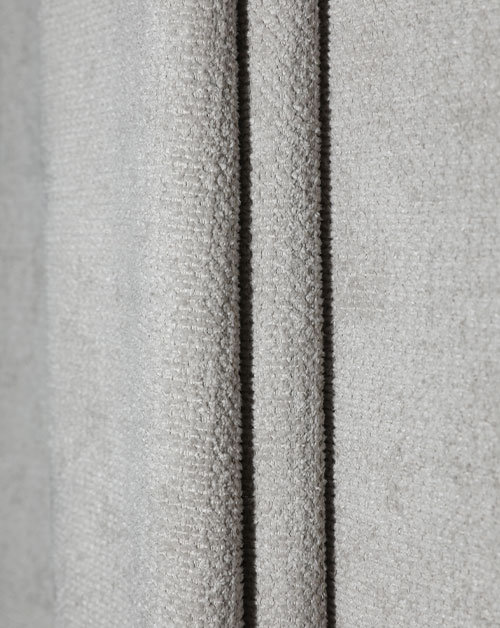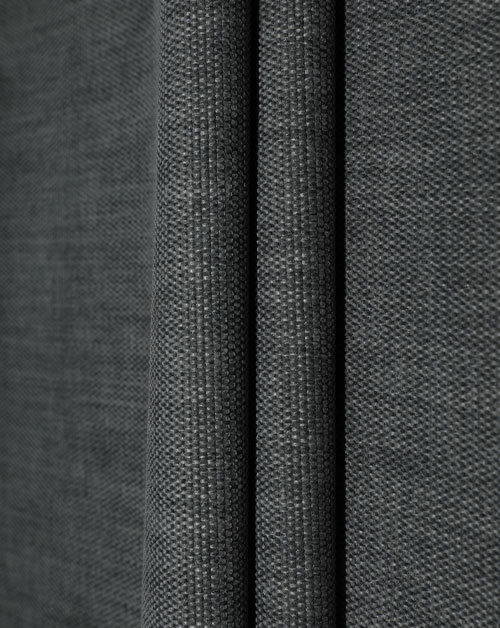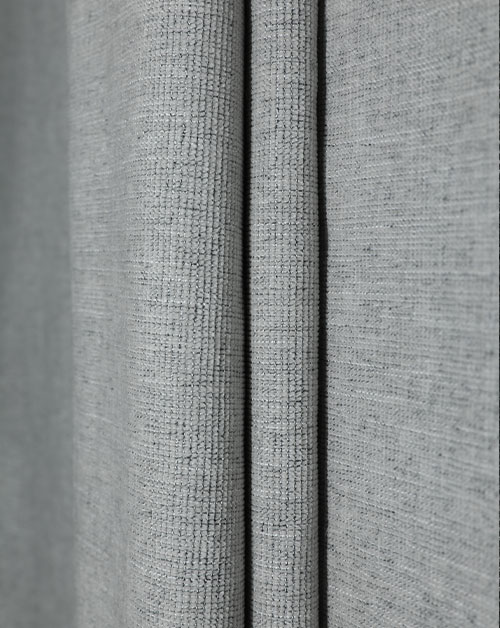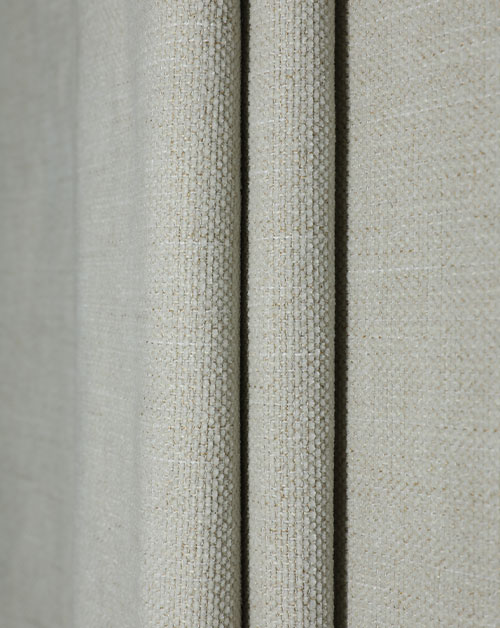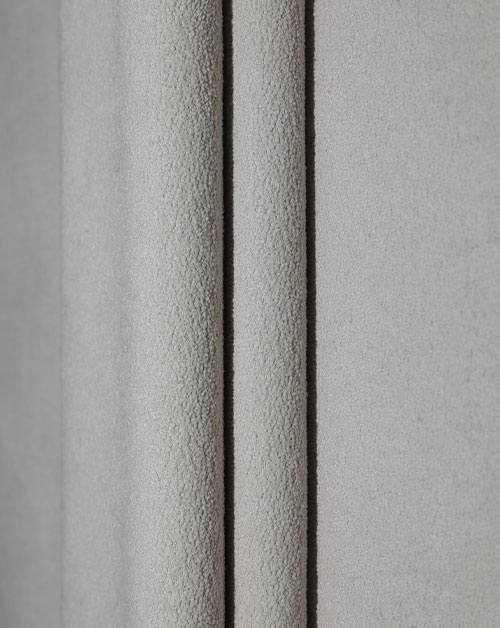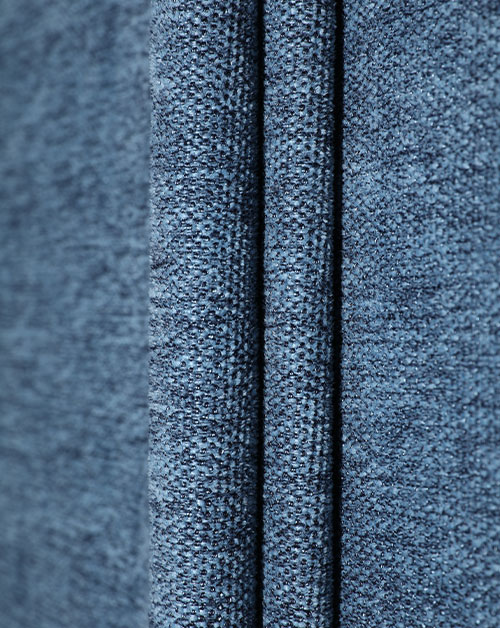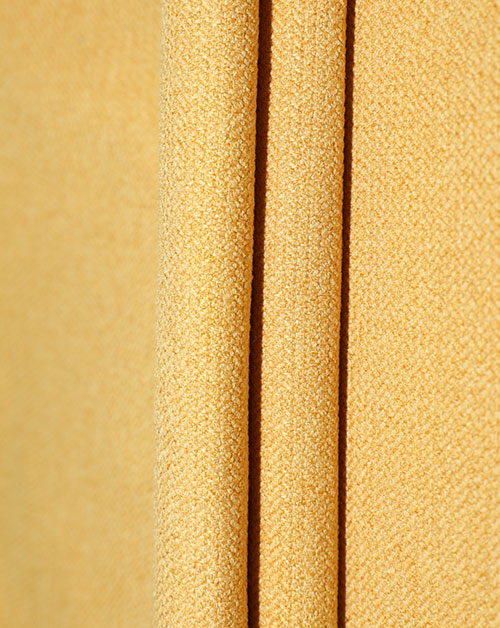Cut pile fabric, with its unparalleled softness and luxurious appearance, has long been an indispensable element in home design. From carpets and sofas to curtains, the warmth and comfort it provides are hard for other materials to match. However, behind this softness lies a series of sophisticated manufacturing processes and techniques. This article will take you on a deep dive into everything about cut pile fabric, from its creation to its future, providing you with a detailed and professional guide.
The Manufacturing Process of Cut Pile Fabric: Core and Procedure
The core of cut pile fabric lies in the act of "cutting." During the weaving process, yarns are formed into countless loops, which are then severed by a sharp blade, causing the fibers to stand upright and create a plush, fuzzy surface. The entire manufacturing process is divided into several key steps:
1. Yarn Preparation and Treatment
This is the starting point of the entire process. Based on the performance requirements of the final product, different fibers are chosen, such as natural wool and cotton, or synthetics like nylon and polyester. These fibers are spun and twisted to form yarns with a certain strength and elasticity. To enhance the fabric's durability and stain resistance, some yarns undergo special chemical treatments, such as stain-proofing or fire-retardant finishes.
2. Weaving
There are many ways to weave cut pile fabric, but the most common method is tufting. On a tufting machine, hundreds of needles with yarn attached rapidly punch the yarn into a base fabric, forming neat loops. This process is like a giant sewing machine, instantly covering the base fabric with a dense layer of loops.
3. Cutting
This is the decisive step that differentiates cut pile from loop pile fabric. On the tufting machine, a blade follows closely behind the needles, cutting each newly formed loop. After being cut, the loops become two upright fibers. The length, density, and uniformity of these fibers directly determine the final texture and appearance of the fabric.

4. Finishing
After weaving and cutting, the fabric is not yet ready for use. It must go through a series of finishing processes to perfect its performance and appearance.
- Backing: In carpet manufacturing, a layer of glue (such as SBR latex) is typically applied to the back of the fabric to secure the fibers, prevent shedding, and increase the overall strength and stability of the material.
- Shearing: This step is done to make the fiber surface more even and uniform. Large shearing machines can trim the fibers to a precise height, creating different effects like Saxony or Plush.
- Dyeing and Post-Treatment: Cut pile fabric can be dyed or printed to create a wide variety of patterns and colors. Additional treatments, such as anti-static, anti-bacterial, and anti-mite finishes, are also applied to enhance the fabric's practicality.
Common Cut Pile Weaving Techniques
While tufting is the most common production method, several other weaving techniques are used to meet different design and performance needs:
- Woven: This is a time-honored, complex technique that produces high-quality carpets and fabrics. The pile, warp, and weft yarns are woven together to form a single, integrated structure, making the fabric extremely stable and durable.
- Needle Punch: This non-woven technique creates a dense, wear-resistant fabric by mechanically interlocking fibers with needles. It is often used for commercial carpets or high-traffic areas.
- Raschel Knitting: This is a knitting technique for producing cut pile fabric, typically used for materials with longer piles, such as faux fur. It is known for its fast production speed.
Fiber Treatment: Enhancing Cut Pile Fabric Performance
The quality of cut pile fabric is not only determined by the weaving technique, but also by the characteristics and treatment of the fibers themselves.
- Twisting: This is a crucial step that affects the feel and look of the fabric. The more a yarn is twisted, the curlier and stiffer the fibers will be (e.g., Frieze). Less-twisted yarns result in softer, looser fibers (e.g., Saxony).
- Heat-Setting: For synthetic fibers like nylon, heat-setting is essential. This high-temperature process permanently sets the twist of the yarn, preventing the pile from flattening or losing its shape over time.
- Stain and Anti-Static Treatment: Many modern cut pile fabrics undergo surface treatments to improve stain resistance. For example, a fluorocarbon coating creates a protective layer that makes it difficult for stains and liquids to penetrate, while anti-static treatment reduces static electricity and prevents dust from clinging to the fabric.
Types of Cut Pile Fabric: A Perfect Blend of Style and Function
Cut pile is not a monolithic concept. Based on fiber treatment, pile length, density, and twist, it is divided into various types, each with a unique visual effect and functional attribute. Understanding these classifications will help you choose the best cut pile fabric for your needs.
1. Saxony: The Epitome of Classic Luxury
Appearance and Characteristics
Saxony is a type of cut pile fabric known for its very even, dense, and smooth surface. The fibers are typically lightly twisted and stand straight up, creating a velvety, fine texture with a strong sheen. The pile is usually long, and under different lighting, it can create a beautiful play of light and shadow.
History and Application
The name "Saxony" comes from a region in Germany famous for producing high-quality fine wool carpets. Today, Saxony remains a top choice for high-end carpets and luxurious interiors. It is best suited for formal living rooms, dining rooms, and bedrooms, where foot traffic is relatively low, allowing its exquisite beauty to shine without the risk of being flattened.
2. Frieze (Twist): The Durable and Practical Choice
Appearance and Characteristics
Frieze fabric is a stark contrast to Saxony. Its defining feature is its "twist." The yarn fibers are highly twisted, causing each fiber to have a unique curl or kink. This high-twist structure makes the fibers very strong and intertwined, creating an irregular, rough, and textured surface.
History and Application
The popularity of Frieze is due to its excellent durability and practicality. It naturally resists crushing and is superb at hiding dirt and footprints, making it an ideal choice for modern families. It is widely used in family rooms, hallways, stairs, and children's rooms—all high-traffic areas. Its relaxed, shaggy appearance also perfectly matches casual and modern home styles.
3. Plush (Velvet): The Art of Ultimate Softness and Sheen
Appearance and Characteristics
Plush, often referred to as velvet, has the shortest and densest pile of all cut pile fabrics. Its pile is cut to an extremely flat and uniform height, creating a very smooth, almost mirror-like surface. This surface reflects light in different ways, creating the characteristic "shading" effect of velvet.
History and Application
The history of velvet dates back to the Middle Ages in Italy, where it symbolized royalty and nobility. Modern plush fabric inherits this quality and is often used for high-end furniture upholstery, decorative pillows, and formal curtains. Its soft sheen and feel make it an ideal choice for creating elegant, vintage, or Art Nouveau-style spaces.
4. Textured Cut Pile: A Fusion of Design and Innovation
Appearance and Characteristics
Textured cut pile is an innovative fabric that combines various pile treatments. It often creates unique patterns and three-dimensional textures by alternating high and low pile heights, mixing yarns with different twists, or combining cut pile with loop pile. This fabric has both the softness of cut pile and the durability of loop pile, offering a balance of beauty and practicality.
History and Application
As home design became more diverse, textured cut pile emerged to meet the demand. It can mimic natural textures or abstract patterns, adding a strong design element to carpets and upholstery. It is suitable for any space that desires a touch of personality and artistry, such as modern living rooms or creative studios.
The Choice of Fiber: The Key to Cut Pile Performance
The texture, durability, price, and maintenance of cut pile fabric are largely determined by the type of fiber used. Understanding the characteristics of different fibers is crucial when selecting a carpet or furniture upholstery.
1. Natural Fibers: The Balance of Luxury and Sustainability
Wool
Wool is the traditional premium material for cut pile carpets. It has a natural crimp that gives it excellent elasticity and resilience, allowing it to quickly bounce back from being compressed. It is also naturally flame-retardant, moisture-absorbent, and eco-friendly. However, it is generally more expensive and requires more careful cleaning, as untreated wool is susceptible to stains.
2. Synthetic Fibers: The Optimal Choice for Performance and Value
Nylon
Nylon is the most popular synthetic fiber for cut pile carpets on the market. It has unparalleled wear resistance and elasticity, capable of withstanding heavy foot traffic without deforming. It also has excellent stain resistance and vibrant, long-lasting colors. Nylon offers great value for money, making it an excellent choice for those seeking durability and practicality.
Polyester
Polyester is known for its soft feel and outstanding stain resistance, especially against water-based stains. It has bright colors and a good sheen, and is generally more affordable than nylon. However, its elasticity is not as good as nylon or wool, so it is prone to flattening in high-traffic areas.
Polypropylene
Also known as Olefin, polypropylene fiber is extremely budget-friendly. It has strong resistance to water-based stains and most chemicals, and does not absorb water, making it ideal for use in damp environments like basements or garages. However, its poor elasticity means the pile is easily flattened, making it unsuitable for high-traffic areas.
3. Blended Fibers: The Smart Choice for Balanced Performance
Blended fibers combine two or more types of fibers to balance their strengths. The most common blend is a mix of wool and a synthetic fiber. This combination can lower costs while retaining the natural benefits of wool (such as softness and elasticity) and adding the durability and stain resistance of synthetic fibers.

Buyer's Guide: How to Make a Smart Choice
After understanding the characteristics of different fibers, you can make the best choice based on the following factors:
- Area of Use: For high-traffic areas (e.g., hallways, stairs), choose nylon or Frieze. For low-traffic areas (e.g., bedrooms, study rooms), wool or polyester (like Saxony or Plush) are ideal.
- Budget: Pure wool carpets are high-end. Nylon or wool blends are mid-range, and polyester or polypropylene are great budget-friendly options.
- Maintenance: If you prioritize easy cleaning and stain resistance, nylon or polyester are better choices. If you are willing to put in more effort for regular care to enjoy a natural feel, wool is an excellent choice.
Care and Maintenance for Cut Pile Fabric: Keeping the Beauty Lasting
Proper daily care and cleaning are crucial to keeping your cut pile fabric looking beautiful and extending its lifespan.
Daily Maintenance: An Ounce of Prevention
Regular maintenance is key to preserving the fabric's appearance and preventing fiber wear.
1. Regular Vacuuming
It's recommended to vacuum at least once a week, especially in high-traffic areas. This effectively removes dust, grit, and dirt from the surface and deep within the pile, preventing them from wearing down the fibers. For most cut pile carpets, you can use a vacuum with a beater bar, but for longer, looser piles (like Plush), use a lower suction setting or a vacuum without a beater bar to avoid damage.
2. Regular Grooming
For cut pile fabrics with flat pile that is prone to crushing (e.g., Saxony, Plush), regular grooming is important. Use a carpet rake or a soft brush to gently comb the pile, helping the fibers stand upright and removing any visible indentations.
Stain Treatment: Act Quickly and Correctly
When spills happen, the right approach can minimize damage.
1. Quick Action
Stains are easiest to remove before they penetrate deep into the fibers. Therefore, you should act immediately after a spill. Use a clean white towel or absorbent paper towels to gently blot the stain from the edges inward, never rubbing, which can spread the stain and damage the fibers.
2. Choosing the Right Cleaner
Before using any cleaner, always perform a small patch test on an inconspicuous area of the fabric to ensure it won't cause discoloration or damage. For water-based stains, use a small amount of mild detergent or soapy water. For oily stains, use a specialized degreaser.
Professional Cleaning: The Necessity for Deep Maintenance
It is recommended to have your cut pile fabric professionally cleaned every 12 to 18 months. Professional cleaners often use steam cleaning or dry cleaning to effectively remove deep-seated dirt and restore the pile's resilience and appearance.
The Future of Cut Pile Fabric: Sustainability, Innovation, and Personalization
As consumer demand for function, sustainability, and personalization continues to grow, the cut pile fabric industry is also evolving. The focus of the future will shift from traditional materials and processes to sustainable development, technological innovation, and unique aesthetic needs.
1. The Rise of Sustainability and Eco-friendly Materials
Sustainability is a major trend in the global textile industry. Future cut pile fabrics will increasingly use eco-friendly and sustainable materials to reduce their environmental impact.
- Recycled Fibers: The use of recycled materials like PET bottles or abandoned fishing nets will become mainstream for producing polyester and nylon fibers.
- Natural Eco-friendly Fibers: In addition to traditional wool, new natural fibers like bamboo, organic cotton, and plant-based fibers will be used more widely.
- Green Manufacturing: Future factories will adopt more eco-friendly dyeing techniques and waterless processing to reduce pollution.
2. Breakthroughs in Functional Technology
With technological advancements, cut pile fabric will not only be beautiful and comfortable but will also offer more practical functions.
- Smart Fibers: Micro-sensors may be embedded into the fabric to monitor indoor temperature, humidity, or even physiological data, enabling smart home connectivity.
- Self-Cleaning and Antimicrobial Technology: Nanotechnology will be applied more broadly to fabric surfaces. For instance, a microscopic structure that mimics a lotus leaf can be created on the fiber surface, providing a self-cleaning function.
- Ultra-Durability: New polymer materials and advanced twisting processes will elevate the wear resistance and elasticity of cut pile fabric to new heights, significantly extending its lifespan in high-traffic areas.
3. The Fusion of Personalization and Digitalization
In an era of consumer upgrades, people are increasingly seeking unique products. Digital technology will enable the personalization of cut pile fabric.
- Digital Printing: High-precision digital printing technology will make it possible to apply any pattern, photo, or design to cut pile fabric, enabling small-batch, custom production.
- Virtual Reality (VR) Applications: Consumers will be able to "place" different types of carpets in their virtual homes using VR technology, allowing them to visualize the effect before making a purchase.
- Modular Design: Future cut pile carpets may be composed of multiple replaceable modules. If a specific area wears out or gets stained, only that module needs to be replaced, reducing maintenance costs and increasing flexibility.
In conclusion, the future of cut pile fabric will be a perfect blend of aesthetics, comfort, sustainability, function, and personalization. It will not just be a part of home decor, but an intelligent, sustainable, and personal companion that fully reflects individual style.

 English
English 中文简体
中文简体 русский
русский عربى
عربى